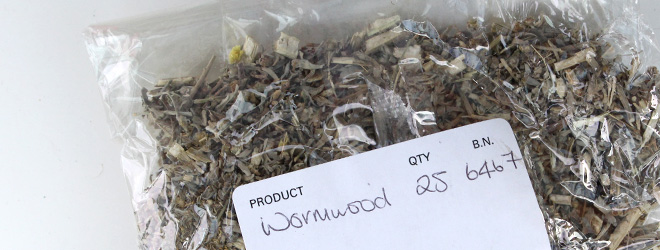Wormwood is one of the most interesting booze-related plants to grow in the garden. It’s a good looker, with silver-green leaves made up of curvy shapes that could belong to a Matisse collage. The plant to get is Absinthium artemisia which, as you may guess by the clue in the name, is one of the main flavourings for absinthe.
Besides the infamous spirit that caused such mayhem among the Parisienne artists of the late 19th century you can also taste its powerfully bitter flavours in vermouth, a fortified wine that, at long last, is starting to come back in fashion – and not just as a cocktail mixer.
Vermouth is made by flavouring wine with various botanicals and fortifying with alcohol – usually a neutral grain spirit and, like wines, vermouths can be red or wine, sweet or dry. Wormwood was one of the original botanicals used to flavours vermouths, having been popular in German fortified wines, and was key in the first Italian versions of these Germanic drinks.
These days, much like gin, practically anything goes when it comes to wormwood flavouring, with an array of herbs, spices, fruits, roots and barks all jostling for attention from the blenders eye. Making your own version is fairly straightforward (we’ve got a recipe for it in our book) but for us, wormwood is always the number one ingredient.

Review! El Bandarra Vermut, 15%
Vermouth isn’t just an Italian or German drink, but is popular all over the world. The UK has never really gone in for it but there are signs that this summer might see a revival. Hoping to make an impression is a gin from Spain which we’ve been sent to review, and we’ve been mightily impressed.
Vermouth is a great choice to precede or accompany a tapas, with its bitter and sweet characteristics setting up the taste buds for salty, nibbly foods in much the same way that a good sherry does. El Bandarra are clearly looking to this market with a colourful bottle decorated with tapas and pinchos dishes.
It’s a sweet white vermouth with a typically musty grape and herby bitter aroma that tastes full of dessert wine sweetness and Summer wine freshness. A subtle but lingering bitterness comes through the sweet juicy flavours that is the perfect prelude to those salty morsels of food, while some warming botanicals seem to make it a suitable choice to accompany the setting summer’s sun. The perfect choice for summer evening al fresco dining, Spanish-German-Italian style.
This is a sponsored post



